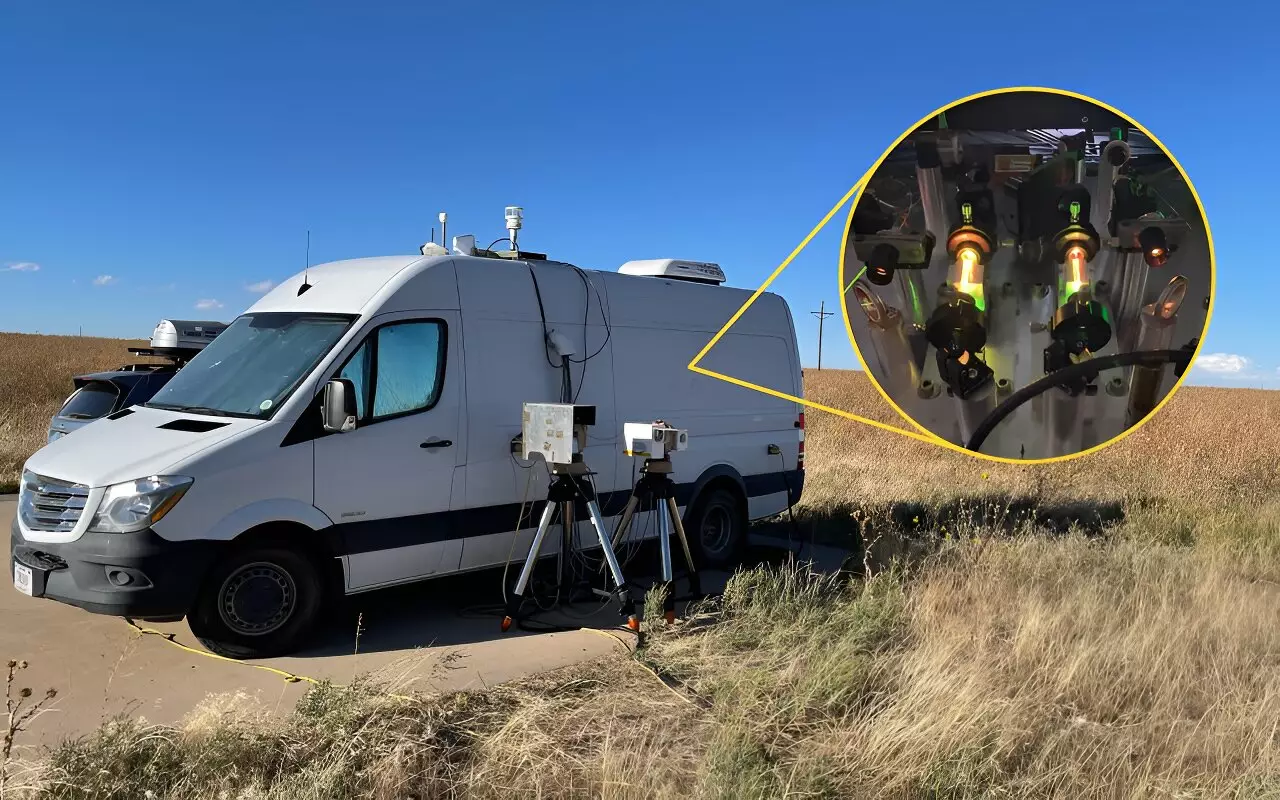Emissions monitoring plays a crucial role in understanding and reducing methane gas, a significant greenhouse gas with a high global warming potential. Researchers at the National Institute of Standards and Technology (NIST) have recently upgraded their emissions-monitoring technology, allowing for more precise measurements even in challenging field conditions. This article explores the advancements made by NIST and their potential impact on efforts to reduce methane emissions.
NIST’s upgraded emissions-monitoring technology enabled researchers to estimate methane emissions in a vast area of Northern Colorado for two months. The study focused on emissions from two primary sources, namely agriculture and oil and gas production. Surprisingly, the study unveiled two unexpected findings. Firstly, methane emissions from concentrated animal feeding operations (CAFOs) were greater than previously predicted. Secondly, total emissions from oil and gas production in the study area appeared to have plateaued despite increasing production in recent years.
Collecting accurate data on methane emissions is essential for policymakers to understand how emissions are changing over time. This information allows for the development and adjustment of regulations to effectively manage and mitigate methane emissions. Methane has a significantly higher global warming potential than carbon dioxide, making it a critical focus in the fight against climate change.
NIST’s emissions-monitoring method differs from traditional approaches, which are based on economic activity estimations. Instead of relying on calculations and estimates, NIST uses frequency combs, specialized lasers with a broad spectrum of colors or wavelengths. These lasers measure gas concentrations in the atmosphere by detecting variations in methane and other gases along a specific path. By analyzing the specific wavelengths of light absorbed by the gases, NIST can determine the concentration of methane and identify its source accurately.
The latest version of NIST’s emissions-monitoring technology offers several improvements, including enhanced robustness, portability, and adaptability to diverse climates. Previous versions of the technology experienced significant downtime, limiting its effectiveness in the field. However, the upgraded system is more temperature stable, allowing for improved data collection even in harsh weather conditions. This increased resilience is a significant advancement, as it enables researchers to gather reliable measurements in adverse environments.
The upgraded technology utilizes frequency combs built from fiber lasers used in the telecommunications industry. These commercially available lasers make the system replicable, allowing companies and laboratories to adopt this emissions-monitoring technology on a broader scale. Additionally, the system does not only measure methane but also other gases such as ethane and ammonia. Correlations between multiple gases can provide a more comprehensive understanding of their sources and impacts, aiding in more accurate emissions estimates.
The future of emissions monitoring looks promising with the continuous development of NIST’s technology. Researchers plan to refine the system’s sensitivity and precision while expanding their research areas. Future studies are expected to focus on measuring nitrous oxide emissions from wastewater treatment plants near Salt Lake City in the coming years. These advancements and expanded research areas will provide regional variations in emissions data, further improving our understanding of pollutant sources and impacts.
As the global community’s emphasis on reducing methane emissions intensifies, advancements in emissions-monitoring technology become increasingly crucial. NIST’s upgraded technology has the potential to provide accurate and actionable information to scientists, industry leaders, and policymakers. By improving our understanding of methane emissions and their sources, this technology contributes to the development of effective strategies for reducing methane’s impact on climate change.
The recent advancements in emissions-monitoring technology by NIST offer valuable insights into methane emissions and their sources. By upgrading their technology, NIST has improved the precision, portability, and resilience of emissions measurements, enabling researchers to collect accurate data even in harsh field conditions. The availability of commercially viable lasers further enhances the accessibility of this technology. As efforts to reduce methane emissions gain momentum worldwide, NIST’s upgraded emissions-monitoring technology is poised to play a significant role in providing essential information for scientists, industry leaders, and policymakers.


Leave a Reply